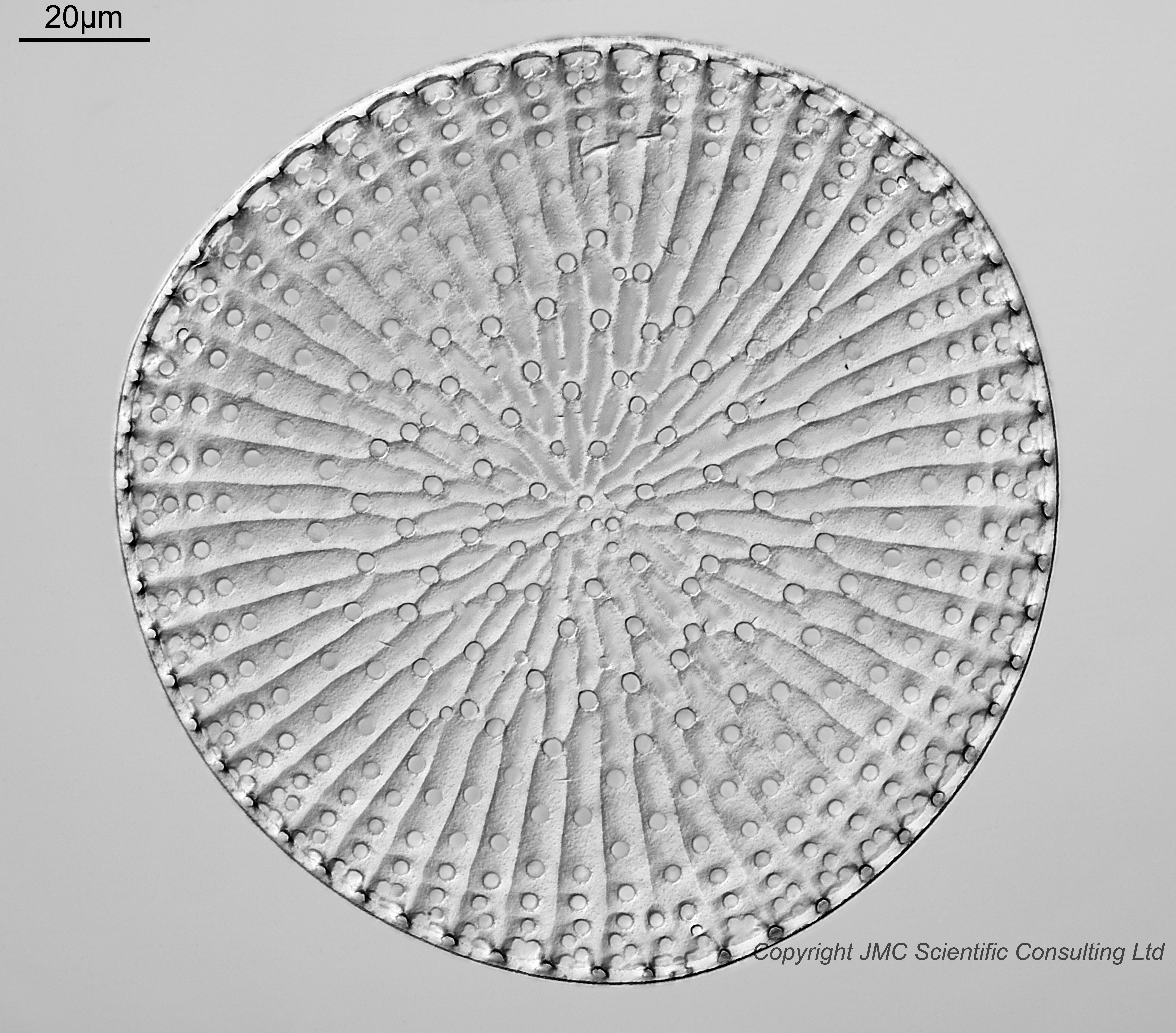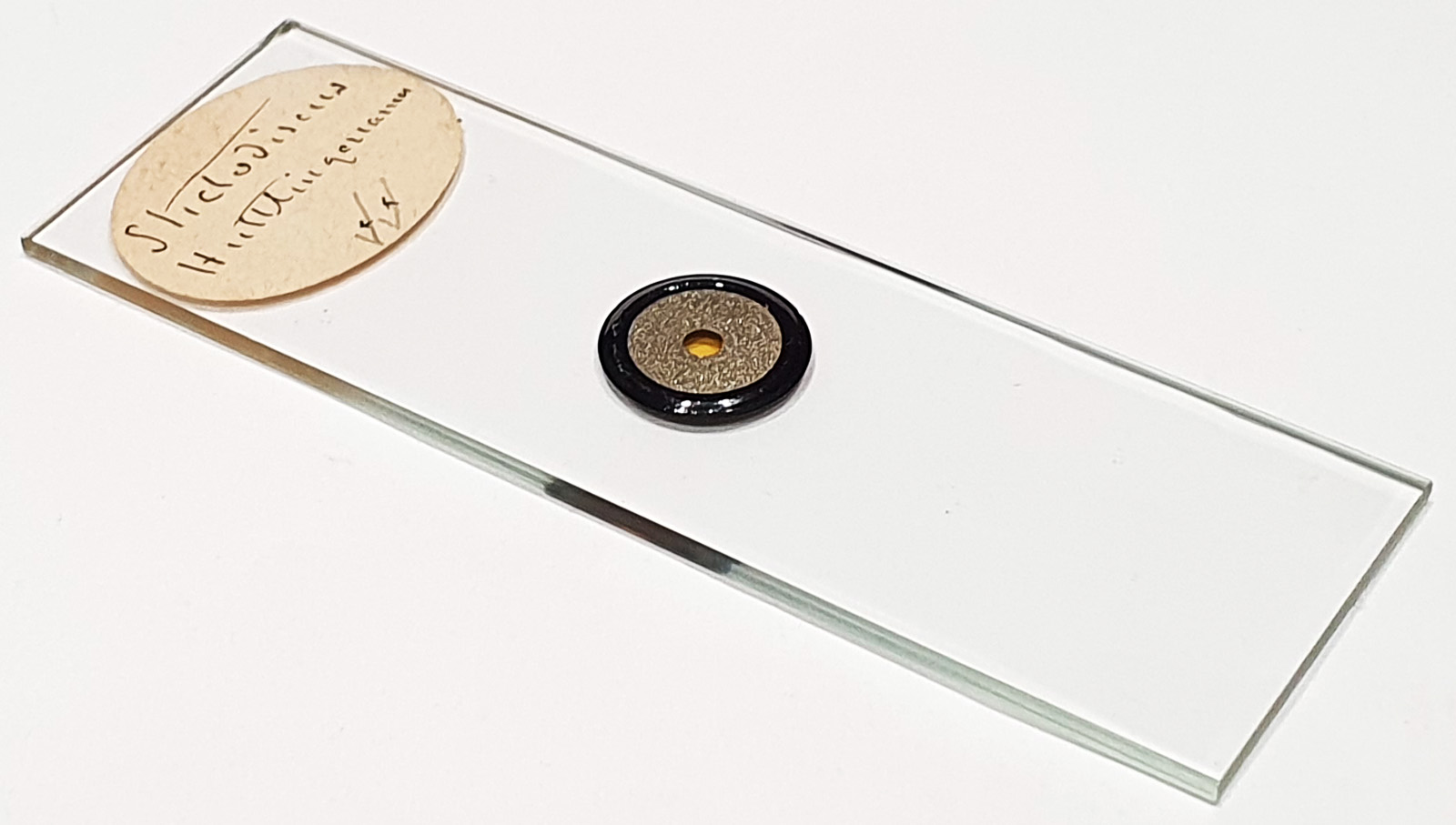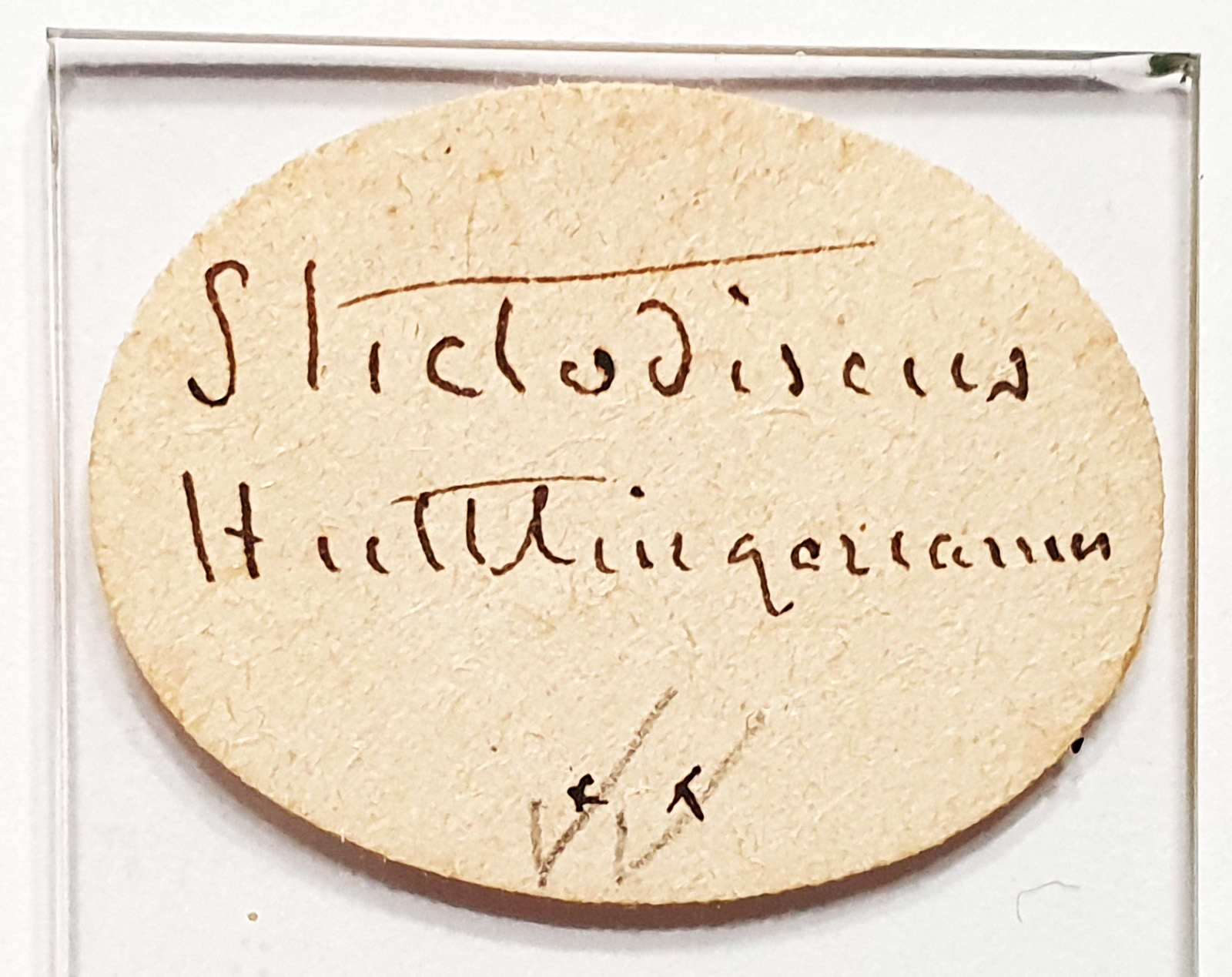


A nicely prepared slide with a single diatom on it. The diatom name is hard to read, but looks like Stictodiscus Huttlingarianum (?). More on this in a minute. Prepared by J Tempère. Olympus BHB microscope using 450nm LED light. 63x Leitz Pl Apo 1.4 objective, oil immersion. Olympus Aplanat Achromat condenser, oil immersion, oblique lighting. 2.5x Nikon CF PL photoeyepiece. Monochrome converted Nikon d850 camera. 25 images stacked in Zerene (Pmax).
Right, the name. I cannot find anything called Stictodiscus Huttlingarianum or with variations thereof. Appearance wise, it looks a bit like Stictodiscus buryanus (for example here). This diatom is discussed in more detail here – Published in: Greville, R.K. (1861). Descriptions of new and rare Diatoms. Series I. Transactions of the Microscopical Society, New Series 9: 39-45, pl. IV. Also, the one showed here is not perfectly round, it looks sort of triangular to me. There are a few variations of S. buryanus on Schmidt’s Atlas Plate 442. I suspect this one could be S. buryanus forma subtriangularis, or perhaps S. johnsonianus. I really am not sure where the name Tempère uses has come from. If you know, please let drop me an email.
EDIT – I have found the name. It is Stictodiscus Hüttlingerianus. This has come from Truan y Luard, A. & Witt, O.N. (1888). Die Diatomaceen der Polycystinenkreide von Jeremie in Hayti, Westindien. Friedlander et Sohn, Berlin., 24 pp., 7 pls. Description on page 19 and then in plate 5, figure 11. A translation of the description is shown below;
“Stictodiscus Hüttlingerianus nov. sp . T. & W.
Robust shape. Edge clearly developed, sculpted. Folds [grooves, wrinkles] not dichotomous [branching], but radial, strongly developed. Points very strong, [which are] arranged in radial rows, which arise from peripheral wedge-shaped groups of smaller points.
Not very common. Plate V, Fig. 11.
A magnificent form, the separation of which from Stictodiscus Buryanus is based on the essentially different formation of the folds [grooves, wrinkles].”
I do return to these posts as and when I get new leads for names, and this is one example of that. I shall leave my previous musings on the name up for completeness, but I consider this to now be closed – it is Stictodiscus Hüttlingerianus.